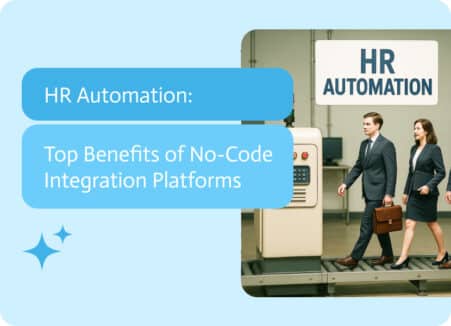

Make ERP Integration
Introducing Make
Make is an integration and automation platform built to simplify workflows for businesses of all sizes. It helps users connect various applications, automate repetitive tasks, sync data, and boost overall productivity. For small businesses and non-profits, Make ERP Integration offers an easy-to-use solution to integrate their ERP systems with other essential tools, ensuring smooth operations.
Top Use Cases for ERP Integration
1. Inventory Management: Sync inventory levels with e-commerce platforms.
Managing inventory efficiently is crucial to avoid stockouts or excess inventory. By integrating your ERP with e-commerce platforms, inventory levels can be automatically updated in real-time, keeping stock data accurate across all sales channels.
Example: An online retailer integrates its ERP with its e-commerce platform. When a product sells, the inventory levels automatically adjust in the ERP, preventing overselling and helping maintain optimal stock levels.
2. Order Processing: Automate order entries from online stores to ERP.
Manual order entry is time-consuming and prone to errors. By integrating your ERP with online stores, you can automate transferring order data to the ERP system, improving order accuracy and processing speed.
Example: A non-profit organization selling merchandise on its website integrates the online store with its ERP. When an order is placed, the details are automatically transferred to the ERP, streamlining order processing and fulfillment.
3. Financial Reporting: Generate financial reports by integrating accounting tools.
Accurate financial reporting is essential for informed decision-making. By integrating your ERP with accounting tools, you can automate the generation of financial reports, ensuring up-to-date and precise financial data.
Example: A small business integrates its ERP with accounting software. This integration enables automatic data transfer, allowing the business to generate real-time financial reports for better financial planning and analysis.
4. Supplier Management: Update supplier information from ERP to other systems.
Keeping supplier information updated across all systems can be challenging. ERP integration ensures that any changes in supplier details automatically reflect in other connected systems, maintaining consistency and accuracy.
Example: A non-profit that works with multiple suppliers integrates its ERP with its supplier management system. When supplier information updates in the ERP, it automatically synchronizes with the supplier management system, ensuring accurate and up-to-date records.
5. Production Scheduling: Sync production schedules with ERP.
Effective production scheduling is key to meeting demand and optimizing resources. Integrating your ERP with production scheduling tools ensures that schedules align with inventory levels, order demands, and resource availability.
Example: A small manufacturing business integrates its ERP with its production scheduling software. This integration allows real-time synchronization of production schedules, helping the business meet customer demand efficiently and reduce production downtime.
6. Expense Tracking: Integrate expense management tools with ERP.
Accurately tracking expenses is vital for maintaining financial health. ERP integration with expense management tools can automate tracking and recording expenses, providing a clear and detailed overview of spending.
Example: A non-profit integrates its ERP with an expense management tool. When employees submit expenses, the data automatically transfers to the ERP, enabling accurate tracking and reporting of all organizational expenses.
Make Alternatives for Larger Organizations
While Make is an excellent solution for small businesses and non-profits, larger organizations might require more robust and scalable integration platforms. Here are a few Make alternatives better suited for bigger enterprises:
- Noca AI: Utilizes AI and NLP to provide a user-friendly, no-code integration platform suitable for all users, offering enterprise-ready solutions.
- Jitterbit: Delivers a high-performance integration platform with tools for API management and data integration.
- Tray.io: Offers a flexible and powerful platform for automating complex workflows with extensive customization options.
- SnapLogic: An enterprise-grade iPaaS solution that supports complex integrations and large-scale data flows.
- Boomi: Dell’s iPaaS platform offering comprehensive integration capabilities for large enterprises.
- Celigo: Provides robust integration solutions focusing on ease of use and rapid deployment.
- MuleSoft: Known for its strong API management and data integration capabilities, suitable for enterprises with complex integration needs.
- Integrately: A user-friendly platform with a wide range of pre-built integrations designed for quick setup.
- Workato: Combines integration and automation capabilities with a focus on ease of use and powerful features.
- Zapier: A leader in the integration ecosystem for many years mainly used by small business and non-profits.
Conclusion
For small businesses and non-profits, ERP integration through Make provides a powerful way to boost efficiency, improve resource management, and make data-driven decisions. By automating tasks, synchronizing data, and ensuring seamless communication across platforms, organizations can focus more on their core mission and less on administrative tasks. Embracing ERP integration can transform how small businesses and non-profits operate, driving growth and success. However, larger organizations should consider more advanced alternatives like Noca AI, Jitterbit, Tray.io, SnapLogic, Boomi, Celigo, MuleSoft, Integrately, Workato, or Automation Anywhere to meet their extensive needs.


